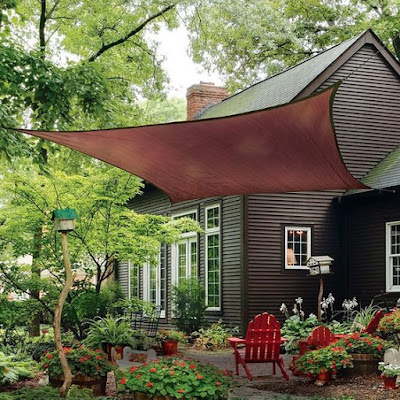Summer’s upon us. That means more ice cream, fewer snowball fights and, of course, the battle to keep your house cool as the heat bears down. As it turns out, you don’t have to build your own ice cave to keep cool until fall. There are plenty of easy changes you can put into action to get a lot more out of your air conditioning budget this year.
How Air Conditioners Work
To really get to the heart of the matter, it’s important that you understand how an air conditioner works. This way, you can strategically plan ways to help it work better, rather than doing things that are counter to its function.
Room air is cooled by an air conditioning unit (or heat pump) in three basic steps:
1. The fan located inside your indoor air handler or furnace kicks on, sucking room air in through your cold air returns. The air passes through your filter, so make sure it’s clean!
2. The warm room air then moves over a set of coils that contain a refrigerant, which cools the indoor air and causes it to release water. The water drops into a pan and is removed via the condensation line. At the same time, the liquid refrigerant inside the coils absorbs the heat, changing into a warm vapor, which is then pushed outside to the condenser coil in your outdoor unit, where it releases the heat from your home.
3. Since the fan is still running on your air handler, cold air comes out the vents and more warm air is sucked across the evaporator coil (also known as the a-coil because of the inverted v shape). Meanwhile, the fan in the outdoor unit is cooling the refrigerant down until it turns back into a liquid and moves back into your home toward the evaporator coil where this whole cycle started.
It’s the cycle of life for refrigerant. That sounds more epic than it is, but hey, air conditioning is pretty great when it’s hot enough to cook an egg in your hammock.
Help Your Air Conditioner Out
Though your A/C unit is absolutely doing the best it can, it could probably do a lot better if you’d lend it a hand. As a homeowner, this benefits you in two ways: first, your house is cheaper to cool and secondly, not pushing your condenser unit as hard as it possibly can go can help prolong its life. Some of the things that can make a big impact should really be performed by a pro, but there are lots of little ways you can contribute to the health and happiness of your entire household. Try these out:
Start with the outside unit. Your condenser unit should always be free of weeds and debris, no matter what time of year it is, but it’s doubly important in the summer. The more garbage that’s plugging up the fins on the coil, the less air movement — and more effort required — for cooling the refrigerant down.
You can also help your unit by giving it a bath at least once a month. Just take a regular garden hose with a trigger sprayer and go all the way around the unit, spraying between the fins, until the water runs clear. Lots of dirt and sand could be hiding up in there, reducing your unit’s efficiency. A fin comb can also help straighten bent fins.
While you’re at it, make sure that unit has plenty of shade. Plant a tree, erect a sunshade, build a little roof over it (but allow at least two feet all around and on top for adequate air flow). The heat from the sun is yet another enemy of the refrigerant in the coil. Keep it as cool as you can with what you have to work with.
If you don't have whole-house air conditioning, try one of the many hard working portable unit - they work wonders in cooling down a room.
Or, try a portable mechanical fan. These hardworking devices move hot air around the room, providing a slight break from even the hottest days and nights. Bonus - they come in a million different styles to match your decor.
Take advantage of those ceiling fans. As the days get warmer, make it a point to set your ceiling fans to rotate in a counter-clockwise direction, pushing air down. You do double duty with this one. The proper rotation creates a chilling effect that allows the average homeowner to keep their thermostat as much as four degrees Fahrenheit higher than they would without the fans blowing. It also helps keep the cold air more evenly distributed, assuming you have ceiling fans in all or most of your rooms.

Cover the windows. Seriously. It doesn’t matter how good your windows are when the worst of the summer’s heat is beating down on them, there’s going to be a noticeable warming coming from that direction. This is when having heavy curtains, thick blinds or other heavy-duty window coverings comes in handy. During the part of the day when the sun hits your windows the hardest, cover them up to reduce heat radiating into your cool spaces. Another option for places where it stays hot a lot of the year is to add awnings over windows that are chronic sources of radiant heat.

Do hot stuff at night. Meaning cooking, drying, extra hot baths — whatever produces heat that’s not really tied to any specific point in the day could be moved to the night shift. If you absolutely need to do these things during the day, keep the cooking limited to the small appliances, dry your laundry outside in the smoldering heat and maybe try a warmish shower. Remember, the more heat you add to the house, the more heat your air conditioner has to move out of your house.
Happy summer, everyone!
Until next time,








